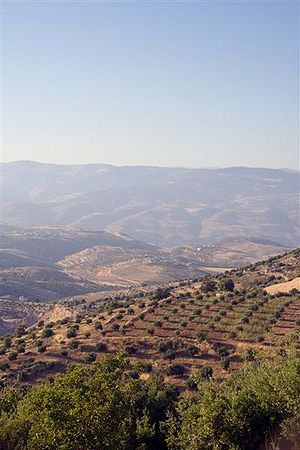
Matot, Mattot, Mattoth, or Matos (מַּטּוֹת—Hebrew for "tribes", the fifth word, and the first distinctive word, in the parashah) is the 42nd weekly Torah portion (פָּרָשָׁה, parashah) in the annual Jewish cycle of Torah reading and the ninth in the Book of Numbers. It comprises Numbers 30:2–32:42. It discusses laws of vows, the destruction of Midianite towns, and negotiations of the Reubanites and Gadites to settle land outside of Israel.
The parashah is made up of 5,652 Hebrew letters, 1,484 Hebrew words, 112 verses, and 190 lines in a Torah Scroll (סֵפֶר תּוֹרָה, Sefer Torah).[1] Jews generally read it in July or early August.[2] The lunisolar Hebrew calendar contains up to 55 weeks, the exact number varying between 50 in common years and 54 or 55 in leap years. In some leap years (for example, 2014), parashah Matot is read separately. In most years (all coming years until 2035 in both the Diaspora and Israel), parashah Matot is combined with the next parashah, Masei, to help achieve the number of weekly readings needed.[3]
- ^ "Torah Stats for BeMidbar". Akhlah Inc. Retrieved July 5, 2023.
- ^ "Parashat Matot". Hebcal. Retrieved July 19, 2016.
- ^ "Parashat Matot-Masei". Hebcal. Retrieved July 12, 2017.